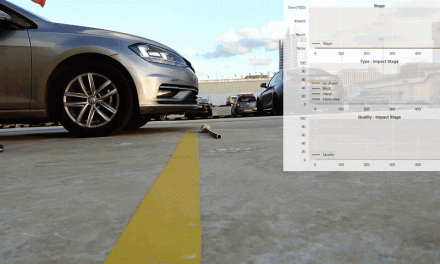Montreal-based Taiga Motors Corp. has started deliveries of the Orca, making it the “world’s first” electric personal watercraft sale. The milestone is just the latest for the pioneer in electric powersports. At the end of 2021, the electric off-road vehicle startup produced its first customer-ready electric snowmobiles.
“This is a significant moment for the Taiga team because not only are we kicking off summer with Orca deliveries, but we are proudly marking the milestone of the first-ever mass-produced electric watercraft available to consumers,” said Samuel Bruneau, Taiga CEO. “Years of engineering and testing of our revolutionary electric powertrain platform in snow and water has now come full circle, truly changing how people connect with the outdoors.”
Taiga developed what it calls the world’s first performance-focused, commercial, electric, off-road powertrain. The company first installed the powertrain in its snowmobiles, then adapted and fine-tuned it for the Orca personal watercraft.
Taiga says its deliveries of the Orca personal watercraft are another achievement in its ongoing mission to electrify the off-road segment—the most challenging and demanding vehicle category. The company initiated North American deliveries of its Nomad snowmobile in March, made its European debut in April, and supplied units to Sépaq, Québec’s Parks and Wildlife Reserve Agency, in May.
Quebec and Canada have both shown great support for the electric powersports startup.
“Our government has always been a champion for a greener economy,” said François-Philippe Champagne, Minister of Innovation, Science and Industry for Canada. “This’s why, last year, we recognized the leading role Taiga is playing in the electrified powersports industry and stepped up to support the manufacturing of their electric vehicles.”
“Taiga is focusing on innovation by allowing users to practice their favorite activity without polluting with this new electric watercraft,” added Pierre Fitzgibbon, Minister of Economy and Innovation for Quebec. “For 100 years now, we have been innovating in Quebec by creating off-road vehicles. I am proud that we continue in this direction today with their electrification.”
With Orca, Taiga aims to redefine the personal watercraft experience with silent operation, power, efficiency, no engine maintenance, and intelligent connectivity. The personal watercraft quietly powers through the water with up to 120 kW and peak torque from zero rpm, the latter easing the getting “on plane” quickly.
On the Taiga blog, the company gave a glimpse behind the scenes of Orca’s design.
With no prior experience developing gasoline-engine vehicles, designers took a clean-sheet approach with the watercraft. They drew inspiration from a variety of sources, including the experience of being in nature.
“I go hiking often, and I’m bothered by the noise of snowmobiles and jet skis,” said Moran Le Calonnec, Mechanical Designer, Body and Accessories, Taiga Motors. “Our products are more discreet, and we try to convey that in the design.”
Designers looked to optimize every aspect of the hull, as it has a major impact on vehicle performance, floatation, stability, and maneuverability. Before building a prototype, the team used computer simulations to refine its shape to decrease resistance and maximize speed range.
“It might not be obvious to the naked eye, but we’ve done a lot of work on optimization,” said Clovis Roy-Bernier, Naval Architect, Taiga Motors, who led the design of the Orca’s hull.
The hull and deck are both made of carbon fiber, hydrodynamically engineered for handling, a leading power-to-weight ratio, and customizable color/finish combinations. The stiff, lightweight material was key to achieving the desired shape and weight for the watercraft.
“If we want to achieve the autonomy we’re aiming for, we have to be able to reduce the maximum weight,” explained Roy-Bernier. “Carbon fiber is the best material for that purpose.”
He said that the Orca watercraft is unique in that it combines the best elements of smaller and larger models already on the market: “We’ve created something that’s very nimble, very maneuverable at low speed, but that can also reach high speeds and remain stable.”
Being electric is an opportunity to explore or innovate when it comes to designing the vehicle or even the accessories.
“The Orca watercraft’s seats are a good example of this,” said Sergio Mora, Senior Industrial Designer, Taiga Motors. “Since there is no combustion engine taking up space underneath the seats, there’s more room for accessories and other functions that may be developed for future models.
The two-seater Orca is 2905 mm (9.53 ft) long, 1040 mm (3.41 ft) tall, and 1156 mm (3.79 ft) wide—and weighs 335 kg (739 lb).
Its direct-driven jet pump drivetrain is fed energy from a lithium-ion battery for a range of up to 45 km (28 mi). Charging is by an SAE J1772/CCS1 combo coupler with up to 6.6 kW onboard charging. Charging times are about 14 h for Level 1, 3.5 h for level 2, and 30 min for 80% with the optional DC fast charge hardware.
The Orca’s Taiga OS (operating system) gives riders industry-leading connectivity and the ability to tailor vehicle behavior based on the riders’ skill level or mood with three selectable drive modes. The Orca’s user interface is by a 7-in HD display screen with control systems for adjustable trim, impeller reverse, electronic lanyard key, and OTA connectivity. It has storage in its center console compartment and in a front compartment.
Pricing starts at $17,490.
- Taiga Orca electric personal watercraft.
- Taiga Orca electric personal watercraft.
- Taiga team celebrates first Orcas coming off the production line.
- Taiga Orca at a Burlington, VT ride event in July.
- Taiga Orca Carbon electric personal watercraft display.

































































































